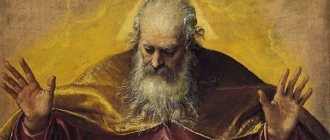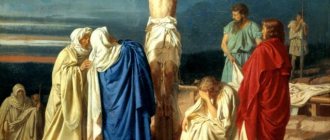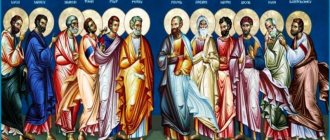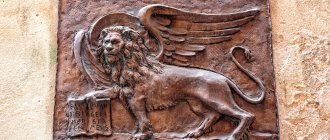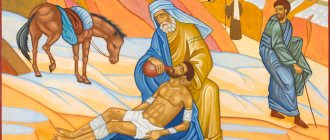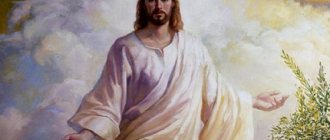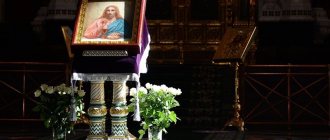Share on social media networks
Harvard Divinity School professor Karen King discovered a textual reference to the wife of Jesus Christ on a Coptic papyrus dating back to the 4th century AD. She spoke about this in a report at the 10th International Congress of Coptic Studies in Rome, The Harvard Gazette reported on September 18. “Jesus said to them, ‘My wife,’” the passage says. The papyrus measures approximately 3.5 by 7.5 centimeters and belongs to a private collector. On one side it contains eight incomplete lines written by hand, and on the other side only three words and individual characters are preserved. The origin of the fragment is unknown, but based on the fact that the inscriptions on it were made in Coptic (the language of early Christians in Egypt), scientists suggest that the papyrus was found in Egypt. A source of information
On one side of the papyrus, the researcher found eight incomplete lines of text. The reverse side of the fragment was badly damaged, and due to faded ink, even after scanning with an infrared ray, only three words and a few individual letters could be distinguished on it. Despite the modest size of the find, the Harvard expert believes that the papyrus sheds long-awaited light on issues of family and marriage among ancient Christians. Karen King plans to publish her research in the January issue of the Harvard Theological Review. A draft of her work, along with images and a translation of the new piece, is available on the Harvard Divinity School .
Scientists' Find Shows Jesus Was Married
Mary Magdalene is one of the most mysterious personalities of the Gospel. People got their idea of her mainly from paintings on biblical themes. They usually depict a half-naked, repentant sinner with beautiful long hair, with which, according to the New Testament, she wiped the feet of Jesus.
The earthly life of Christ before the start of the sermon
Since ancient times, there has been a legend that Christ was allegedly married to His disciple Mary Magdalene. In our time, this false legend has become especially famous. Why is the misconception that “Mary Magdalene is the wife of Jesus Christ” so widespread? First, let us remember what is known about the earthly life of the Lord.
Saint Mary Magdalene
The Holy Church teaches that our Savior Jesus Christ is the God-man. He is the true God, the Son of God the Father and one of the Persons of the Holy Trinity. At the same time, He is a perfect man - the son of the Virgin Mary, immaculately conceived by the Holy Spirit, a descendant of the king and prophet David. Saint Simeon the New Theologian teaches:
“[Christ] united His entire Divine hypostasis essentially with our nature... The Creator of Adam himself immutably and invariably became a perfect man” (“Collection of Creations”).
Christ was born in the Jewish city of Bethlehem. The formal husband of Mary and, accordingly, the imaginary father of Jesus was the elderly carpenter Joseph. He was the pious guardian of God's chosen Virgin. She named her Son Jesus on the eighth day of His earthly life, during the Jewish rite of circumcision. This name was announced to Mary by an angel (Luke 1:31). After forty days, the Infant God was brought to the Jerusalem Temple, where the traditional rite of dedication to the Most High was performed over Jesus.
What was Christ's youth like? The Holy Scriptures are silent about this. In all likelihood, Christ helped his parents and mastered his father’s craft. He lived an ordinary life. And this showed the unparalleled humility of God, who became a simple man and worked quietly among other people for many years.
The Sermon and Sacrifice of Christ
At the age of thirty, Jesus came to the prophet John the Baptist and received Baptism from him. Then the Lord retired to the desert, where he fasted and prayed for 40 days, preparing for public ministry. There the devil tried to tempt Christ. But Jesus rejected sinful temptations and began to preach.
In those days, turning thirty was an important milestone in the life of a Jewish man. From that moment on, he was considered sufficiently developed and wise to instruct others. The Lord began public ministry precisely at the age of 30, in order to fulfill the custom and not confuse those to whom He would preach. For 3 years, the Savior taught people the Truth, performed miracles and gathered disciples. Archpriest Alexander Men notes:
“He created Christianity not as some kind of abstract doctrine, but sowed the seeds of the Kingdom of God on earth.”
The Jewish high priests hated Christ and declared Him a blasphemer deserving of death. At that time, the Roman governor in Judea was Pontius Pilate. Fearing unrest and the emperor's wrath, he yielded to the chief priests and executed Jesus. Together with two thieves, Christ was crucified on Mount Golgotha, in the vicinity of Jerusalem. But three days later the Lord rose again, and 40 days later ascended to Heaven.
Through the Incarnation, reconciliation between the Creator and man took place. Our sins were atoned for by the sacrifice of Christ on the cross, and His Resurrection opened the way for us to salvation in Eternal Life. St. Maximus the Confessor teaches:
“Innocent and sinless, He paid the entire debt for people as if He Himself were guilty, returning them to the grace of the Kingdom and giving Himself as a ransom and atonement for us” (“Mystagogy”).
Orthodox theologian and publicist Sergei Khudiev continues the saint’s thought:
“We in no way deserve all these benefits. But Christ earned them for us. We do not deserve to enter heaven, but Christ deserves to enter into heaven all who belong to Him.”
The wife of Jesus Christ - did the Savior have a family?
To redeem and save humanity, God Himself had to become a man. Therefore, the Son of God in everything except sin became like man. Why, then, did Christ not marry and give birth to children? The Holy Church is unanimous in its opinion about the virginity of Christ. But at the same time, marriage not only is not a sin, but, on the contrary, is commanded by the Creator (Gen. 1:27-28). Archpriest Andrei Efanov explains:
“Marriage is not obligatory for a person. There are two ways of salvation - angelic (monasticism) and family. Both of them are blessed by God. Monasticism is not lower than marriage; it is another service, which consists of being entirely with God and serving others without being in a marriage union. And this is also the path of love.”
The priest notes that Christ’s purpose was not procreation, but our salvation. His service to the Creator was like that of a monk, angelic. The Lord showed us an example of true love through His life and sacrifice. He became the Father immediately for all humanity. Therefore, we are all children of Jesus Christ.
Christ Himself taught that both marriage and pure celibacy are pleasing to God. Understanding the severity of the feat of virginity, He did not impose it and said:
“Whoever is able to receive it, let him receive it” (Matthew 19:12).
But everyone else is better off starting families:
“It is good for a man not to touch a woman. But to avoid fornication, each one have his own wife, and each one have her own husband” (1 Cor. 7:1-2).
Christ also supplements the Old Testament commandment on marriage with a warning about its indissolubility:
“What God has joined together, let no man put asunder” (Matthew 19:6).
The Lord calls adultery the only reason for divorce:
“Whoever divorces his wife, except for the guilt of fornication, gives her a reason to commit adultery. And whoever marries a divorced woman commits adultery” (Matthew 5:32).
Gnostic False Claims About Jesus Christ
In the Gospel of Judas, Jesus tells Judas that he did Him a favor by letting Him be killed so that He could give up the body because He was trapped. In the Gospel of Judas, the God of the Old Testament is an evil God. However, this is not all of the shocking stories that can be found in other fictitious Gnostic writings that are put into the mouth of Jesus and apparently were never told by Him. The fact that some Gnostics have created a false claim that Jesus Christ was married is nothing new. This was the premise of the popular book and movie The Da Vinci Code, which came out about ten years ago. This document obviously does not prove that Jesus Christ was married. But this is evidence that some heretical groups have made such statements.
Is your find real? It depends on what you mean by reality. If you mean "real" in the sense that there is a fourth-century Coptic document that can be interpreted as saying that Jesus Christ was married, then my answer is "Yes, probably." Is it “real” that the majority of the church believed or even considered the possibility that this could actually be the case? The answer to this question is a resounding “no.”
This document is of interest to students of the history of Christianity and the heretical groups that arose from the church, but it is of no interest to those who want to know what Jesus Christ said and did.
Jesus Christ and Mary Magdalene
Mary Magdalene (that is, originally from the village of Magdala) is a disciple of Christ, whom He healed from possession by evil spirits. Together with the Mother of God and the Apostle John, this righteous woman was present at the execution of the Savior. Contrary to popular belief (including in Catholicism), Mary Magdalene and the harlot saved by Christ from stoning (John 8:2-11) are not the same person.
Mary of Magdala is one of the myrrh-bearing women mentioned in the Gospel (Luke 24:1-10). This is how the Christian tradition calls the Jewish women devoted to the Savior who came to the cave-tomb of Christ to anoint His body with myrrh (incense). However, by that time the Lord had already risen. Mary Magdalene was the first to learn about this from an angel and saw the risen Savior. She hastened to report the miracle to the rest of Christ’s disciples. Soon after the Ascension of the Lord, Mary went with the apostles to other lands to preach the Gospel. Therefore, the Church honors her as an equal-to-the-apostles saint.
The emergence of the pseudo-history that Mary Magdalene is the wife of Jesus Christ is associated with heretical Gnostic movements. They originated in the 2nd century AD and were a mixture of Christianity with paganism and eastern mythology. To give their teaching more authority, the Gnostics often compiled apocrypha (non-canonical legends) about personalities sacred in Christianity.
Speculation about Christ and Mary Magdalene was widespread among heretics as early as the 3rd century. Later they developed into a legend that the descendants of Jesus possess secret mystical knowledge. The Holy Church has nothing to do with such blasphemous stories.
Secrets of Jesus' Possible Descendants
The question still remains open whether Jesus was married and whether he had descendants. For example, the hierarchy of the Church denies the very fact that Jesus was married. But, at the same time, the churchmen are making every effort to suppress discussion in society of the Savior’s family.
But some theologians do not hide their findings. For example, Harvard theology professor Karen King demonstrated the result of studying some ancient papyrus found in a private collection. It contained only eight lines written in Coptic and, most likely, it was a fragment of the Gospel and it spoke of the wife of Jesus Christ - “Jesus said to them: my wife.” In addition, there is still a lot of indirect evidence that the Savior was married. And this information violates the official version of the Vatican.
Experts know that there are several versions of the Gospel, some of them were destroyed by the clergy. But, having declared information about the personal life of the Savior to be heresy, the church hierarchs could not actually get rid of it. Only four Gospels are recognized as canonical; the rest are not recommended for reading by the Church. The texts of the Gospel of Mary, Thomas and Philip, which became available only recently, became such “rejected” by the Church. And although they were written later than the Gospels of John, Mark, Matthew and Luke, this fact is not a reason to mistrust them.
It should be noted that information about Jesus’ marital status was deliberately not included in the text of the New Testament, so as not to single out any of Christ’s disciples. Nevertheless, early Christian writers of holy texts repeatedly mentioned the words “wife of Jesus.” Even in the canonical Gospels, attention should be paid to the fact that after the resurrection, the Son of God appeared first to Mary Magdalene. It is unlikely that he could have appeared to a simple woman (even a former harlot who had taken the righteous path) if she had not been a close person to him, and most likely, his wife. If we recall the traditions, an unmarried woman could not be among the disciples of the prophet during his wanderings. One of the “rejected” Gospels of Philip says that Jesus’ disciples were jealous of Mary Magdalene for their teacher. They were especially outraged by the fact that the prophet kissed Mary Magdalene on the lips. If this is so, then it is unlikely that Mary was an ordinary follower of Jesus - a more plausible conclusion suggests itself that she was the wife of a prophet.
There is a description of a certain ceremony that Christ’s disciples observed - Mary Magdalene washed the Savior’s feet and wiped them with her hair. But this, according to ancient traditions, is one of the rituals of the wedding ceremony. Another indirect evidence of the marriage ceremony is the conversation between Jesus and his mother about the lack of wine at the table. It was then that the prophet turned water into wine, which aroused the admiration of the guests: “Every person first serves good wine, and when they get drunk, then the worst; and you have saved good wine until now.”
We also know that Jesus had a positive view of marriage. The Gospel of Luke says: “Have you not read that the Creator created male and female from the beginning? So let a man leave his father and mother and cleave to his wife, and the two will become one flesh.” By the way, according to ancient Jewish customs, an unmarried man could not become a teacher. The law said: “An unmarried person must not teach others.”
Historians are confident that the ancestors of Jesus are the Hebrew kings David and Solomon - therefore, the inscription on the cross “King of the Jews” on which Jesus was crucified was not a mockery, but a statement of fact. Perhaps the cruelty with which Jesus was treated by his executioners was connected with his right to the throne of Jerusalem. True, there was one problem - for the inhabitants of Jerusalem, although Jesus was of a noble family, for them he was a stranger. Having married Mary Magdalene, who came from these places and was a descendant of a princely family, the prophet and his heirs became a significant political figure in Jerusalem. The Gospels of Thomas and Philip speak of the children of Christ. The widowed Mary Magdalene, after the execution of her husband, hastily left Judea with her children. According to eyewitness accounts, it was she who took with her the Holy Grail (the blood of Jesus), which became the most revered relic of Christianity.
According to some reports, the Jesus family moved to the south of France and lived in one of the Jewish communities. Researchers Henry Lincoln and Richard Ley analyzed many traditions and legends existing in Provence (France). They wrote a most interesting book, “The Sacred Riddle.” In it, the authors refer to the fact that the Holy Grail “surfaced” among the Albigensians (a Christian religious movement in the south of France). In addition, it is in the south of France that there are many cathedrals and churches dedicated to Mary Magdalene.
The family tradition of one of the oldest families in France, the Seigneurs de Trancavel, has been preserved. They descend from the Merovingian dynasty. De Trancavel are confident that the legendary Merovei, who gave his family its name, is a direct descendant of Mary Magdalene and Jesus. All descendants of the Merovingian dynasty wore long hair, had a birthmark in the form of a cross and had a special cut on the head, which was intended for communication with God (Jesus had a similar cut). There are still legends that the Merovingians were endowed with miraculous powers: they knew how to turn water into wine and cure serious illnesses. Interesting fact: one of the descendants of the Merovingians, Godfrey of Bouillon, participated in the crusade against Jerusalem. After entering Jerusalem, when the question arose about his accession to the throne of Jerusalem, he refused, citing the fact that he would not be crowned in the city where Jesus was executed.
Also in 480, the Merovingians saved the Roman Church from the actions of the Visigoths, who were weakening the power of Rome and destroying Christian temples - the fate of Rome hung in the balance. In this situation, the Pope makes an unexpected and far-sighted decision. Knowing the truth about the origins of the Merovingians, he concluded a pact with the descendant of the dynasty, the king of the Franks, Clovis I. Its essence is that Clovis accepts Catholic Christianity, and the Church names him New Constantine and transfers to him control of all the lands of the Roman Empire. Automatically, the Roman Catholic Church acquires the status of the main European Church, and the Merovingian clan acquires the status of emperors of the Holy Roman Empire, which arose from the ruins of old Rome. The Franks accept Christianity. The new Constantine begins the fight against the enemies of Rome. In 507, Clovis finally defeated the Visigoths at the Battle of Vouillet, then liberated Carcassonne and Toulouse. Clovis I died in 511. His empire was divided into four parts among his sons. For more than a century, the Merovingians ruled almost all of Europe. But the Merovingians made a fatal mistake for the dynasty - they ruled with the hands of their administrators-majordomos. For this, the people nicknamed the Merovingians “idler kings” and such a disdainful attitude towards governance processes led to tragedy for the entire dynasty.
A wedge of discord between the Catholic Church and the Merovingians was driven after the treacherous murder of one of the Merovingians, Dagobert II. This descendant of Jesus had a difficult life. At the age of five, he was kidnapped by the majordomo and sent to Ireland. After 15 years, he married the Visigoth princess Gisela (city of Rhazes) and, living surrounded by the Visigoths, he became imbued with ideas denying the role of the Church in communication with God. In 674, Dagobert II takes the throne, according to the law of succession. He had many plans to strengthen his kingdom, but he was treacherously killed while hunting. The killer planned to destroy the king’s entire family, but the ruler’s sister was able to transport the son of King Sigibert IV in time to his mother’s relatives in Rhazes - from then on the boy was called Plante-Ar, which meant “ardent escape.” The Church justified the murder of Dagobert II - and from that moment on, a time of confrontation began between the dynasty of the Jewish kings and the Catholic Church.
In 741, the throne of the Merovingian dynasty was seized by the son of Charles Martel, Pepin the Short. The new ruler named his dynasty in honor of his father - the Carolingians.
But the Merovingians also retained their patrimony - by this time a small independent state had formed around the city of Rhazes, where the descendants of the Merovingian dynasty ruled. The Carolingians recognized this state, and the Church pretended that it knew nothing about the existence of this state. The Church commits a forgery - it publishes a false “Deed of Constantine”, according to which it receives not only all the rights and fortune of the Roman emperor from the Merovingians, but also arrogated to itself the right to appoint kings. Crowned by the church to the throne of the Roman Empire, Pepin the Short understands that he occupies this post illegally, because the throne of the Roman Empire could only be occupied by a descendant from the Merovnig dynasty. In order to somehow veil this betrayal, the Carolingians married Merovingian princesses. It follows from this that all subsequent descendants of the Carolingians, through the female line, also belong to the Merovingians.
In 928, a descendant of the Merovingians, Godefroy of Bouillon, created the Order of Zion. The order's main task is to prove that Jesus did not die on the cross. The Merovingians' goal was to repay the Catholic Church for their betrayal. If the Order of Zion exposes the earthly nature of Jesus, the church will lose its meaning and become unnecessary. The Order of Sion continues to function to this day. It became the source of the most mysterious secrets in the history of mankind. The Merovingians organized a Crusade to liberate the Holy Sepulcher from the Muslims and returned it to the Christians in 1099 - the Kings of Israel, after more than a thousand years, regained their rightful place. Immediately, the Merovingians gave instructions to build a well-fortified abbey of Notre-Dame du Mont-de-Sion on Mount Zion, which became the main base of the Order of Zion. The Merovingian heirs, appreciating the role of Godefroy of Bouillon in returning the dynasty to their homeland, elected him king of Jerusalem, but he refused this honor in favor of his brother Baudouin I.
Another most mysterious branch of human history is the Order of the Poor Knights of Christ (Templars). The Order was founded by the Grand Master of the Order of Sion - Hugo de Payns. It was believed that the Templar Order was founded to help pilgrims traveling along the roads of Palestine. But the Templars did not patrol the Palestinian roads at all, but were searching for Formal Proof for the Order of Zion. And they found him. The Merovingians hide the found Evidence in Rennes-le-Chateau (formerly Rhazes), where all the Merovingian treasures were kept. The Church decides to recognize the Templar Order. The order itself is gaining strength, power and rapidly growing rich. Since 1146, the Merovingian sign appeared on the Templar cloaks - a red cross with forked ends. The time came when the Priory of Sion and the Knights Templar were ruled by the same Grand Master Bertrand de Blanchefort - the organizations merged into one. Bertrand de Blanchefort in 1156 called on German miners who, with the strictest secrecy, built underground storage facilities in abandoned mines. It was under de Blanchefort that the Templar Order became the most powerful organization that intervened in the politics of world states at the highest level. But the luxury and permissiveness of the Templars destroyed the Order. After the death of King Baudouin IV of Jerusalem, the Templars violate the truce with the Muslims and two years later the warriors of Allah enter Jerusalem. The Templars return to France. There is a break between the Order of Zion and the Order of the Temple. A radical restructuring begins in the Order of Sion. They leak information about the Holy Grail in order to divert everyone's attention from the main secret of the Order - the mystery of the crucifixion of Christ.
The entire subsequent history of Europe is filled with attempts by members of the Order of Sion to penetrate the highest echelons of power in all European countries, the return of the descendants of the Merovingians to the throne and the constant rocking of the foundation of the Catholic Church.
But the Church is also taking measures to destroy the Priory of Sion. And a reason was found - the murder of the Pope's legate, Pierre de Castelnau, in 1208. The Albigensian Crusade begins, in which a 30,000-strong army of crusaders participates. This army of ruthless killers destroys everything in its path. “Kill them all. God will sort out his own later!” - the legate of Pope Innocent III gives them parting words. The most famous episode of these times is the capture by the crusaders of the castle of Montsegur, where the main shrine of the Merolings was kept. On the night of March 16, 1243, before the fall of Montségur, four initiates carried the Merolingian treasure out of the castle. The crusaders burned all the remaining defenders of Montsegur at the stake.
King Henry III of Austria threatened the Templars with confiscation of their property and received the answer from them: “As long as you are just, you will reign; but if you violate justice, you will cease to be a king! This impudence did not go unpunished - on October 13, 1307, by order of King Philip the Fair of France, all the Templars were arrested and their found property was confiscated. In 1314, the last Grand Master of the Templars, Jacques de Molay, ascended the fire. However, the mythical treasures of the Templars were never found.
There is a legend that when Saint Remigius baptized Clovis of the Merovingian dynasty, he predicted that the reign of the dynasty would last until the End of the World. It seems that the prediction is coming true - almost all the kings of France were descendants of the Merovingians, as well as the rulers of other countries, for example, the Spanish Bourbons. Some rulers of Russia are also considered descendants of Clovis - Ivan the Terrible and representatives of the Romanov dynasty.
The mystery of Jesus' descendants will always haunt people's minds. Today we only know a very small part of information about the possible descendants of the Savior. I would like to believe that in time, humanity will become worthy of knowing the truth about Jesus and his family.
https://www.youtube.com/watch?v=EDG_pL9Nj9g
Subscribe to our Social networks


